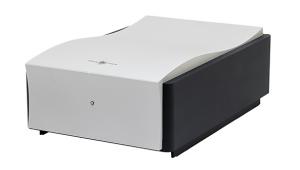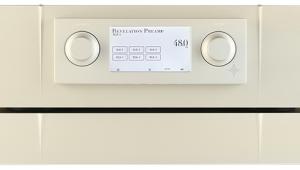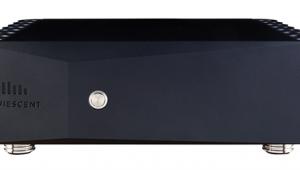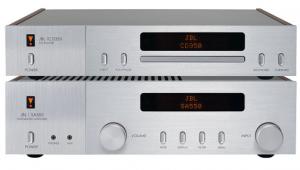Acoustic Imagery Pre Amp/d400m (£3594/£2394 Each)
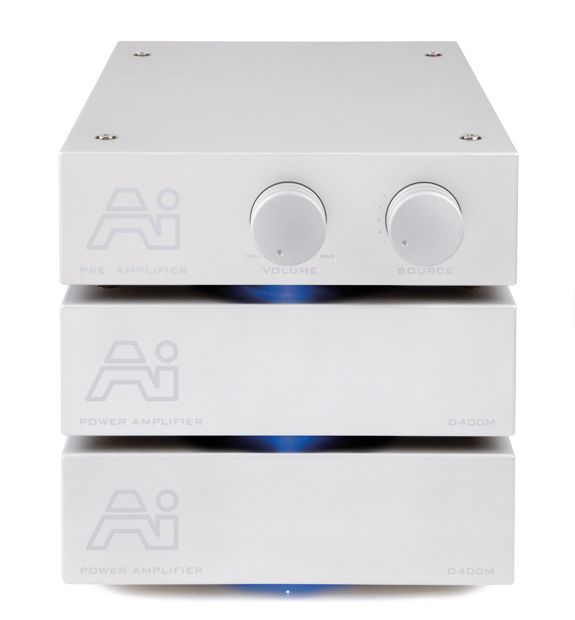
Once you’ve got the hi-fi bug it seems it’s impossible to shake it off. Certainly this is the case for John Young, who has recently launched a new electronics marque, Acoustic Imagery, based in Warminster.
Acoustic Imagery’s first products are these D400M Class D monoblock power amplifiers and a partnering active preamp called, simply, the Pre Amplifier. With a sharp eye, as ever, on the latest developments on the hi-fi scene, HFN has secured the first samples for a world exclusive test. We’re told there’s much more to come from this hatchling company, including a configurable MM/MC phono amplifier, price £3450, that should be available by the time you’re reading this. Higher-end pre/power amps are on the drawing board for future release too.
John Young’s CV dates back to the days of the Oak turntable that he was manufacturing in the UK during the early 1980s, in partnership with the late Steve Williams. They’d met while working at a hi-fi store and formed a bond as both were keen vinyl enthusiasts. Move the clock forward to the mid-1980s and John was responsible for the formidable (and wonderfully named) Wellard mid-field active monitors that found their way into several recording studios. Audiophile veterans will surely recall the British MYST electronics brand from this period. It was MYST’s MOSFET power amps that powered those ‘kick-ass’ Wellards.
Says John Young: ‘While earning a living doing a proper job these past years I’ve never lost my passion for audio and have been constantly developing my home system. Since 2005 I’ve been keeping a weather eye on the increasing refinement of Hypex’s UcD amplifier modules that have garnered a fine reputation among many high-end audio manufacturers and knowledgeable audiophile DIY-ers. I think they sound fabulous.’
COMPACT POWERHOUSE
As the nomenclature implies, each D400M employs one of Hypex’s 400W modules, rated into 4ohm. In fact it’s the top of the range UcD400HG variant featuring additional voltage regulators pre-mounted within the assembly. What makes the D400M stand out from the crowd is the use of Hypex’s recently-introduced switched mode power supply (SMPS).
John Young again: ‘I’ve witnessed the performance of the UcD modules getting better and better over the years and was thrilled when Hypex offered a compact supply designed specifically to match them. I believe it obviates many of the shortcomings associated with traditional SMPSs and it has allowed me to make a powerful monoblock in an extremely compact form – precisely what I wanted to achieve – in a chassis milled from a solid billet of aluminium. I think this might be the first commercialisation anywhere in the world of an amplifier that is textbook Hypex through-and-through, including the power supply.’
Following Hypex’s ‘best practice’ application notes to the letter, the D400M’s input is via an XLR socket with the signal ground connected to the chassis. Since the Pre Amplifier is a single-ended design with RCA outputs, Acoustic Imagery includes a beautifully made XLR-to-RCA interconnect cable with each D400M. It’s an NS-F1 ‘Quattro Silver’ multi-strand model from ViaBlue of Germany [see www.viablue.de]. The supplied cable is only 0.5m long, but greater lengths are available from Acoustic Imagery should you wish to place the monoblocks close to your speakers. You can also discuss the amps’ colour options. Ours were silver anodised aluminium, but black anodised is an option as is a powder coat paint finish in almost any colour.
Housed in an identical case, the line-level Pre Amplifier is based largely on modular components from Danish Audio ConnecT (see www.dact.com). It has a triple stage power supply and five single-ended inputs. Volume control is via DACT’s 24-step attenuator that employs an array of surface mount metal film resistors mounted on a gold-plated spiral track. The power transformer is housed in a separate ‘isolation chamber’ milled out of the aluminium block. Both the Pre Amplifier and D400Ms incorporate soft-start circuits (also from Hypex) and each sits on silicone rubber feet that can be replaced by supplied miniature spikes.
This pre/power combination is as minimalist as they come, with manual volume control and source selection – which may be of little consequence if the preamp is going to be next to your listening seat. If you’re thinking of burying them in a cupboard or on a bookshelf, note that the power on/off switches are hidden at the rear.
VELVET GLOVED
From the outset this Acoustic Imagery combo sounded smooth and self-assured, with tremendously powerful and tightly controlled bass coupled with silky high frequencies. By the time I was ready to return them to the manufacturer I’d heard nothing to alter that initial impression.
Only recently, another Class D-powered amplifier drove my Townshend Sir Galahad speakers, in the shape of the Primare I32 integrated that has received universal acclaim, and an EISA Award this year to boot. Of course, the Class D modules used in the Primare amplifier are a proprietary ‘UFPD’ design just as the power supply implementation is similarly distinctive. And indeed these two designs sound wildly different, serving to illustrate that you really shouldn’t believe anyone who opines, ‘Oh, it’s Class D… so I know precisely what it’ll sound like’. Because, while the Primare I32 sounds crisp, clean, brightly-lit and super-fast, this Acoustic Imagery pre/power combination is considerably more mellow, relaxed and easy-on-the-ear, possessing a smooth liquidity that is almost valve-like in nature. Only in their tight and detailed bass delivery do the squeaky-clean Primare and velvety opulent Acoustic Imagery amplifiers bear any resemblance to one another whatsoever. And yet, fundamentally, they are both ‘Class D’.
I’m tempted to observe that the Acoustic Imagery’s character is a reflection of proprietor John Young’s predilection for vinyl replay, the sound balance appearing tonally warm and – those words again – smooth and silky, although this would be wholly presumptuous. The fact is, it does sound rather ‘analogue-like’: silver-tongued and forgiving of brittleness in imperfect source recordings where the Primare is less tolerant, with warts ’n’ all clarity.
Seemingly unflappable given even the most dense and explosive recordings, it’s not simply the power, depth and tight grip on one’s woofers that’s so impressive here, rather the amplifiers’ ability to describe succinctly the pitch, tone and texture of bass instruments with tremendous clarity.
A good example of this came with bassist Patrick O’Hearn’s 1995 album Trust [Deep Cave Records 70891-81001-2]. Typical of much soporific ambient minimalism, O’Hearn’s compositions can appear tediously monotonous unless your replay system is capable of resolving subtle changes in intonation and texture. In the opening track, ‘Liberty’, as the hypnotic weave of Warren Cuccurullo’s accompanying guitar pattern repeats ad nauseam, it’s the delicate, almost subliminal changes in O’Hearn’s bass playing that’s vital to the piece. Thanks to the Acoustic Imagery’s LF clarity these delicate inflections could be clearly observed: the cunningly understated changes in bass dynamics; the faint alterations in phrasing and intonation. Most importantly, it’s the amps’ lack of muddling in the lower registers that throws into clear relief the composer’s deviously subtle key changes that happen wa-ay down low, so subterranean that they’ll be missed by listeners hearing the music through anything other than large floorstanders or top-notch subwoofers capable of resolving bass detail as well as flapping trousers.
TROUBLED WATER
A track I’ve been using regularly this year during listening tests is ‘Bridge Over Troubled Water’ performed by Iver Kleive on the organ of Bergen Cathedral, taken from the soundtrack to the Norwegian film deUSYNLIGE. The track is one of several available from www.2l.no as a free download if you click on the ‘Test Bench HD audio files’ tab in the ‘2L brand store’ drop-down list. I can’t stand the piece of music if I’m honest, having sickened of the melody in my early teens when Simon & Garfunkel rode the top of the ‘hit parade’ with their single for what seemed like an eternity. But this 24/96 recording by 2L Records is spectacular, and via the Pre Amplifier/D400M combo the largest pipes of the cathedral’s organ were served up in stellar fashion. So was the wide and deep image captured by the recording, although I detected a slightly ‘sat on’ quality, the acoustic space lacking some air.
Driving the monoblocks with a Cambridge Azur 840E confirmed that it’s the Pre Amplifier that’s guilty of robbing the sound of some transparency, sounding a tad grainy and ‘grey’. The D400M monoblocks, however, are nothing short of sensational and can be considered miniature marvels given their huge power and fabulous sound quality.
VERDICT
Beautifully formed and packing a mighty punch with a velvet glove, this pre/power combo might not offer the last word in transparency to recordings – but you’ll never realise more potency from a smaller package. If this minimalism is not off-putting you really should hear these superb powerhouses. They are ideal for audiophiles with difficult or insensitive speakers but without the real estate to house a Krell!
Originally published in the January 2012 issue






